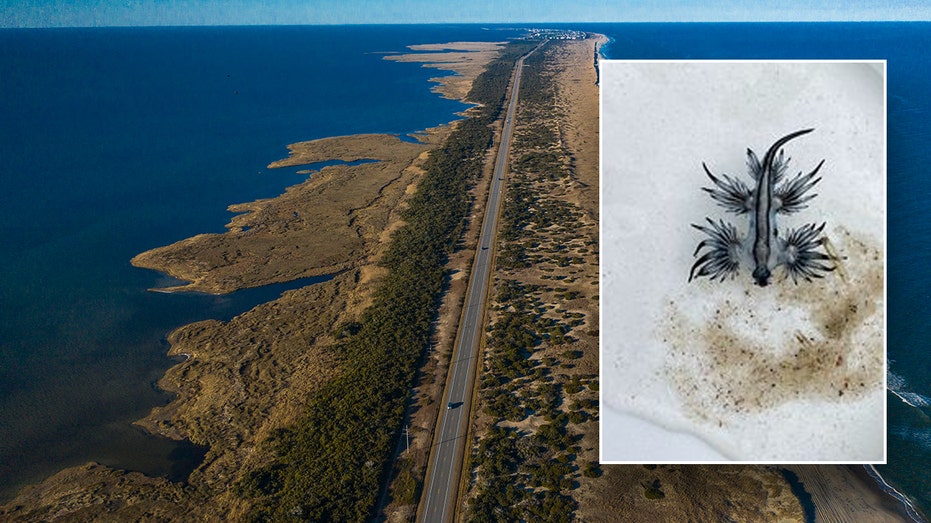
Venomous Blue Sea Dragons are washing up on the sandy shores of the Outer Banks in North Carolina, and National Park officials advise to admire them from a distance.
Venomous creatures were spotted washing up on the beaches of the Outer Banks in North Carolina, and the National Park Service sent out a warning about the punch these slugs pack.
The Cape Hatteras National Seashore posted on Facebook that Blue Sea Dragons (Glaucus atlanticus) have been spotted on the beaches.
“This venomous sea slug lives in the open ocean and occasionally gets stranded on land following strong winds,” officials from the National Seashore posted to Facebook. “They may only grow to about an inch long, but don’t let their size fool you. They pack a punch!”
According to Oceana.org, Blue Sea Dragons go by other names like sea swallow or blue angel and can grow to about 1.3 inches.
12 OF THE OCEAN’S CREEPIEST CREATURES THAT ARE SURE TO MAKE YOUR SKIN CRAWL
They are often found throughout the Atlantic, Pacific and Indian oceans in tropical and subtropical waters.
The specimen is considered a sea slug and spends most of its life floating upside-down at the surface and staying afloat by storing air bubbles in its stomach, the organization wrote.
MONTANTA 12-YEAR-OLD STUNNED AS HE REELS IN RECORD-BREAKING FISH: ‘I’M IN DISBELIEF’
Cape Hatteras National Seashore officials say Blue Sea Dragons move through ocean currents feeding on their meal of choice: the Portuguese man o’ war.
“Because their meals consist of such a venomous creature, they are capable of storing that venom for their own defense,” the park service wrote. “They concentrate that ingested venom and deliver a sting that is even more powerful! Talk about a fiery bite for such a small dragon.”
HOUSE ON NORTH CAROLINA’S OUTER BANKS COLLAPSES INTO OCEAN
Since these tiny slugs carry such a strong toxin, park officials advise anyone who comes across one of these blue beauties to admire it from a safe distance and be cautious of others nearby.
“Blue Sea Dragons can travel in groups known as ‘Blue Fleets,’” the post read. “If they are discovered, dead or alive, they remain venomous. Please enjoy this fascinating organism without touching it.”



